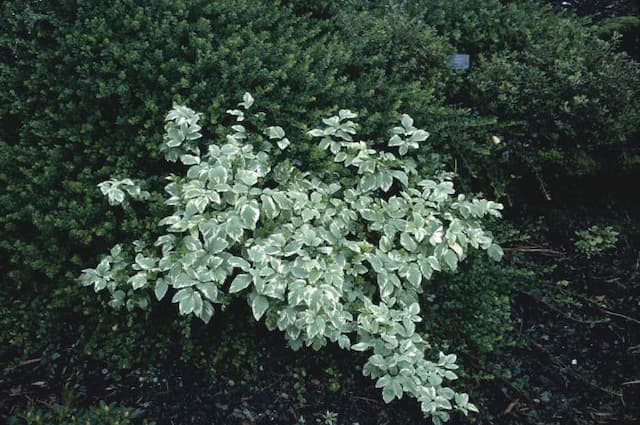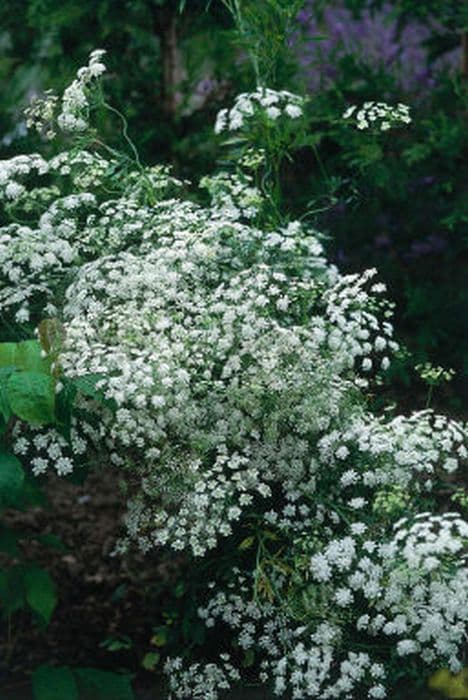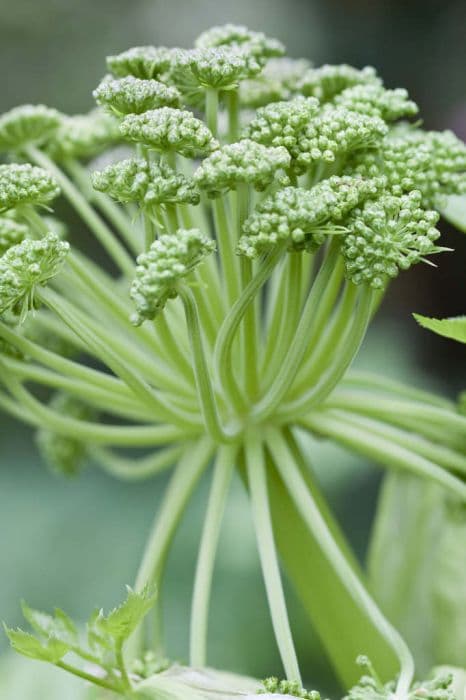Sea Holly Eryngium × zabelii 'Big Blue'

ABOUT
The 'Big Blue' is a striking plant known for its vibrant blue color which includes both its flowers and stems. The flowers are noteworthy for their thistle-like appearance, characterized by spiky bracts and a cone-shaped center that gives them a somewhat prickly look. These flower heads are a magnet for bees and butterflies thanks to their bright color and nectar. Beneath the flowers, the stems also capture attention with their blue hue that carries the color theme throughout the plant. The foliage adds another layer of texture and color with its lance-shaped leaves that have a silvery-green tone, sometimes touched with bluish shades that complement the flowers and stems. Overall, 'Big Blue' offers a distinctive and eye-catching appeal with its combination of cool-toned colors and unique floral structure that can add a touch of drama to any garden setting.
About this plant
 Names
NamesFamily
Apiaceae
Synonyms
Sea Holly, Big Blue Sea Holly
Common names
Eryngium × zabelii 'Big Blue'
 Toxicity
ToxicityTo humans
Eryngium × zabelii 'Big Blue', commonly referred to as Sea Holly, is not listed as a toxic plant to humans. Generally, it does not cause poisoning if ingested and is considered safe around humans. However, it's always best to avoid eating ornamental plants as they are not intended for consumption and could cause stomach upset or an allergic reaction in susceptible individuals.
To pets
Sea Holly is not known to be toxic to pets such as dogs and cats. It is unlikely to cause poisoning if ingested by pets. However, ingestion could potentially lead to mild gastrointestinal upset due to the plant not being a normal part of a pet's diet. It is always wise to discourage pets from eating ornamental plants to prevent any potential stomach discomfort.
 Characteristics
CharacteristicsLife cycle
Perennials
Foliage type
Deciduous
Color of leaves
Green
Flower color
Blue
Height
2 feet (60 cm)
Spread
1 foot (30 cm)
Plant type
Herb
Hardiness zones
5
Native area
Cultivar
Benefits
 General Benefits
General Benefits- Attracts Pollinators: 'Big Blue' Sea Holly is known to attract bees and butterflies, which are essential for pollination.
- Drought Tolerant: Once established, it is highly tolerant of drought, making it suitable for xeriscaping or gardens with low water availability.
- Deer and Rabbit Resistant: The spiny foliage and bracts deter deer and rabbits from grazing on it.
- Architectural Interest: With its striking blue flowers and unique texture, it adds architectural interest to gardens and landscapes.
- Long Blooming: The plant has a long blooming season, typically from early to late summer, providing extended visual interest.
- Low Maintenance: 'Big Blue' Sea Holly requires minimal care once established, making it an easy choice for both new and experienced gardeners.
- Cut Flowers: The blooms are long-lasting when cut, making them a good choice for floral arrangements.
- Dried Flowers: They can also be dried and used in arrangements, retaining their color and shape well.
- Salt Tolerant: It has a good tolerance for salt spray, making it a suitable option for coastal gardens.
 Medical Properties
Medical PropertiesThis plant is not used for medical purposes.
 Air-purifying Qualities
Air-purifying QualitiesThis plant is not specifically known for air purifying qualities.
 Other Uses
Other Uses- Floral Arrangements: The vibrant blue, thistle-like flowers and long-lasting nature of Sea Holly make it an excellent choice for both fresh and dried floral bouquets.
- Craft Projects: Dried Sea Holly can be used in making decorative wreaths, ornaments, and other craft items where a touch of natural texture and color is desired.
- Photographic Subjects: Due to its striking appearance, Sea Holly is often used as a subject in botanical and garden photography, offering a unique texture and color contrast.
- Garden Borders: Its upright habit and spiky texture can be utilized to add definition and interest to garden borders.
- Theme Gardens: Sea Holly can be used in xeriscaping or seaside-themed gardens, reflecting its tolerance to dry and poor soil conditions.
- Educational Use: It can serve as a plant specimen for educational purposes in horticulture and botany classes, particularly for studying drought-tolerant species.
- Companion Planting: Sea Holly can be planted alongside other perennials to help deter garden pests with its spiky foliage, contributing to a natural pest management system.
- Culinary Decoration: Although not a common practice, the flowers can be used to add a unique decorative element to specialty dishes in upscale culinary presentations.
- Fashion Inspiration: The distinctive look of Sea Holly has been used as inspiration for fashion designers, particularly in textile patterns or jewelry designs.
- Ecosystem Support: While not a major source of nectar, Sea Holly does provide some support to pollinators, such as bees and butterflies, thereby contributing to the local ecosystem.
Interesting Facts
 Feng Shui
Feng ShuiThe Sea Holly is not used in Feng Shui practice.
 Zodiac Sign Compitability
Zodiac Sign CompitabilityThe Sea Holly is not used in astrology practice.
 Plant Symbolism
Plant Symbolism- Determination: Eryngium × zabelii 'Big Blue', commonly known as Sea Holly, often symbolizes a strong will to overcome challenges as it can grow in difficult conditions and has a tough, spiny appearance.
- Independence: Its ability to thrive in poor soil and drought-like conditions lends itself to symbolize self-reliance and independence.
- Attraction: Historically, Sea Holly was believed to have aphrodisiac properties, so it may represent attraction or a means to draw people together.
- Protection: The prickly nature of Sea Holly can be reminiscent of a need for defense or a safeguarding barrier, symbolizing protection.
 Water
WaterThe Sea Holly should be watered deeply but infrequently, as it is drought-tolerant once established. During the growing season, a general recommendation is to water the plant with about 1 inch of water once a week, depending on the climate and soil drainage. If the plant is in well-draining soil, which it prefers, ensure that the soil dries out between waterings to prevent root rot. For container-grown plants, water until excess water flows from the drainage holes. In hotter, drier periods, you may need to increase water to every few days but always check the soil moisture first. It is important not to over-water, as this can promote disease and weaken the plant.
 Light
LightSea Holly thrives best in full sun conditions, meaning it requires at least 6 to 8 hours of direct sunlight daily to grow healthily. A spot that receives unfiltered sunlight for most of the day is ideal. In areas with particularly hot climates, it can benefit from some afternoon shade, but generally, the more sun it gets, the better it will flower.
 Temperature
TemperatureSea Holly can withstand a range of temperatures and is hardy in USDA zones 5 through 9. It can tolerate temperatures as low as -20°F and as high as temperatures typical of its growing range without issue. Ideally, it prefers the average temperature range of 60°F to 75°F for optimal growth.
 Pruning
PruningPruning Sea Holly is mainly done to remove spent flower stems and to tidy up the plant. Cutting back the faded blossoms can sometimes encourage a second bloom. Typically, pruning can be done after flowering or in late winter to early spring. It is not a requirement for the health of the plant, but it may enhance its appearance. Pruning is needed once a year or after flowering seasons.
 Cleaning
CleaningAs needed
 Soil
SoilSea Holly (Eryngium × zabelii 'Big Blue') thrives in a well-draining soil mix with a pH range of 5.5 to 7.5. A good recipe would be a mix of loamy garden soil, coarse sand, and compost to improve drainage and provide nutrients.
 Repotting
RepottingSea Holly doesn’t need frequent repotting; it can be repotted every 3-4 years or once it has outgrown its current container.
 Humidity & Misting
Humidity & MistingSea Holly prefers dry to average humidity levels and can tolerate coastal conditions.
 Suitable locations
Suitable locationsIndoor
Place Sea Holly in bright light, away from direct heat sources.
Outdoor
Choose a sunny spot with good drainage for Sea Holly.
Hardiness zone
5-9 USDA
 Life cycle
Life cycleEryngium × zabelii 'Big Blue', commonly referred to as Sea Holly 'Big Blue', begins its life cycle as a seed, which germinates in late winter or early spring under the right conditions of moisture and temperature. Seedlings emerge, develop a rosette of basal leaves and a deep root system to establish themselves. As it matures during the growing season, the plant develops a sturdy flowering stem with spiny, blue-green foliage and metallic-blue flower heads that bloom in midsummer attracting pollinators. After pollination, seeds form and are dispersed by the end of summer or early fall. The plant is perennial and enters a period of dormancy during the cold months, with above-ground parts dying back and growth resuming from the rootstock with the return of warmer weather. Over successive years, the plant can expand via self-seeding or vegetative propagation, completing its lifecycle and spreading within its cultivated area.
 Propogation
PropogationPropogation time
Late Winter - Early Spring
Eryngium × zabelii 'Big Blue', also known as Big Blue sea holly, is typically propagated through division. The best time to carry out this process is in early spring or fall, just before or as the new growth begins. To propagate by division, carefully dig up the plant and use a sharp shovel or knife to divide the clump into smaller sections, ensuring that each section has a portion of the root system and several growth points. Replant the divisions at the same depth they were growing originally, and water them well to encourage establishment. Space the divisions about 18 inches to 2 feet apart to allow sufficient room for growth.









